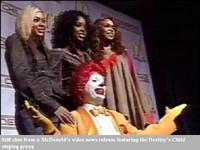We need this skill – we are per definition herd animals and need to position ourselves in order to survive. Some people excel in personal marketing. What distinguishes them from others? Answer: they perceive themselves as a one-person empire and act accordingly implementing classic marketing tools. How do they do it?
Let’s look at Madonna (the artist).
Madonna decided two decades ago that she wanted to be a famous entertainer.
She analyzed her strengths (dancing, trend setting); her weaknesses (singing voice, no start up capital); opportunities (club circuits, people that where willing to help her/give her a shot); threats (many competitors, not well connected).

She formulated her unique selling point as catchy boogie tunes combined with an energetic dance performance. She identified her target audience as trend setting clubbers, DJs and talent scouts. She launched her “Madonna” brand in trendy NY clubs, making sure the routine was fresh and cutting edge.
She focused on playing many gigs and working the club scene, building her presence, name recognition and network. It resulted in a contract with Warner Bros. with the hit “Like a Virgin”.
For the last 20 years, Madonna has cleverly redefined her product to ever-changing tastes of a fickle audience in both music and presentation (packaging).
Over the years, the product Madonna changed from rude to prude – currently being the spiritual, talented wife-and-mother who embraces the Kabbalah.
Each product has by nature a limited life span. Madonna handled this by creating a clever product mix of music, books and merchandise.
She leverages her motherhood by successfully launching five children’s books with a sixth one in the pipeline. A side effect is getting the Madonna brand across to the next generation of CD and music files buyers. her brand is so strong, that even the news that her books might have been written by a ghostwriter, didn't impact the sales.
In January 2006, her next album “Defying Gravity” is scheduled to be released which will coincide with the launch of her perfume. The perfume deal alone has a reported value of $ 9.5M.
Overall, her ROI is threefold: the obvious monetary rewards that she reaped over the years (net worth in 2005 > $ 350M); the status of “Queen of Pop”, firmly placing her at the pinnacle of her industry; the label “icon” which ensures her eternal presence in the chronicles of the global music and entertainment history.
http://www.forbes.com/lists/2005/53/KMJ4.html
Few of us will ever reach the level of success that Madonna enjoys. But each one of us can learn from her – by following her example and marketing ourselves.




